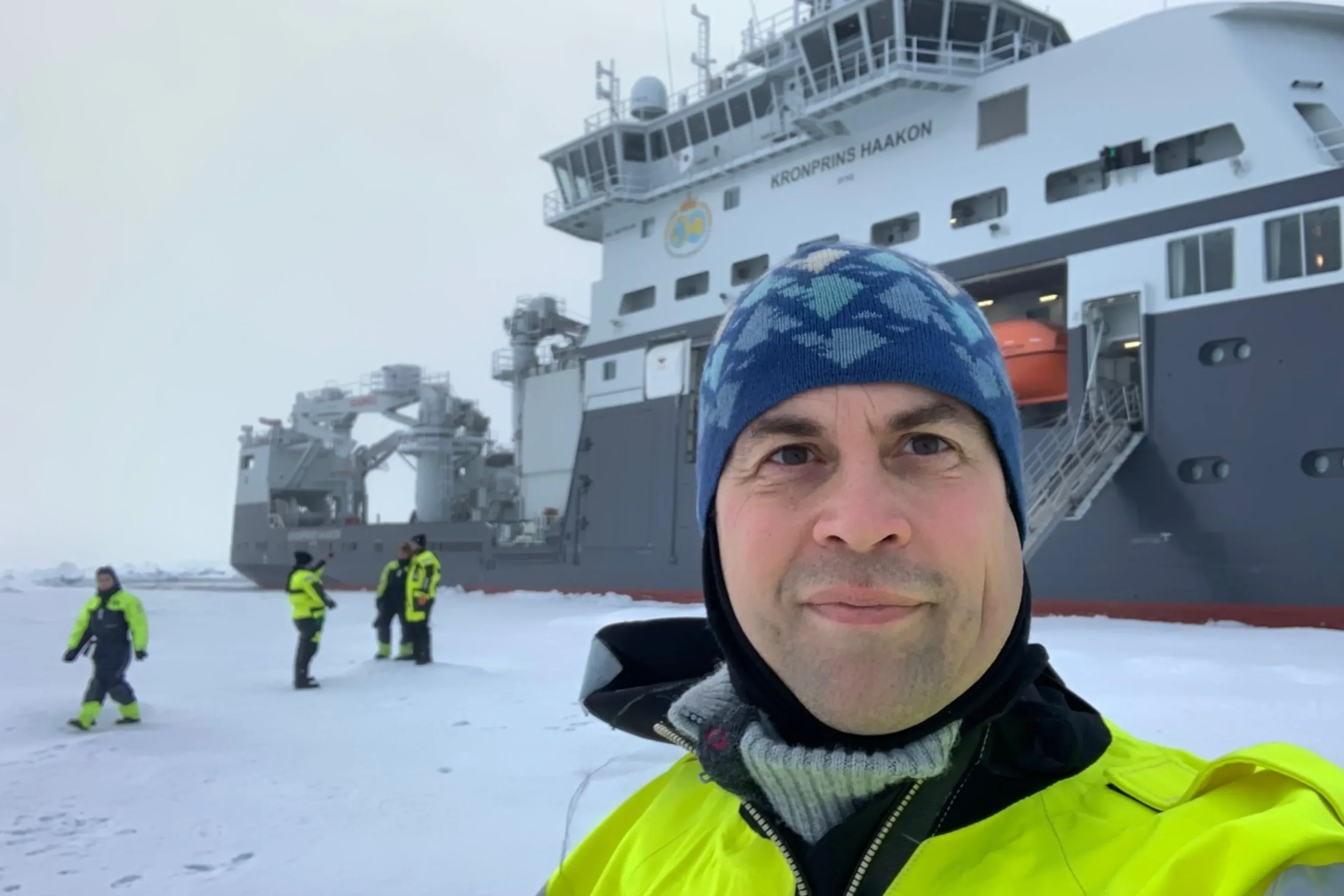Written by Ellen Viste, communication adviser, Bjerknes Centre for the Climate Research.
– Sometimes when we look out of the window, we wonder if we are in the open sea, says Stijn De Schepper.
The research leader at NORCE and the Bjerknes Centre writes by email from the research vessel Kronprins Haakon, an icebreaker, on a cruise in the Arctic Ocean. He describes a journey through surprisingly navigable sea ice.
This week Kronprins Haakon reached the North Pole – the first time without needing assistance to get through the ice.
Paradoxically, the lack of sea ice makes it easier for the research team onboard to complete their mission: to explore what happens as the Arctic Ocean turns from white to blue.




